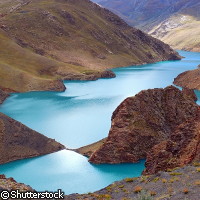Climate change may crumble Asian water towers
Climate change will wreak havoc on Asia's food security in the years to come, new research from the Netherlands shows. The study, presented in the journal Science, was funded in part by the CEOP-AEGIS ('Coordinated Asia-European long-term observing system of Qinghai Tibet plateau hydro-meteorological processes and the Asian monsoon system with ground satellite image data and numerical simulations') project, which clinched EUR 3.4 million under the Environment Theme of the EU's Seventh Framework Programme (FP7). The researchers, from Utrecht University and FutureWater, a Dutch research and consulting group with expertise in water management issues, said a region of the Himalayas will sustain a significant loss in snow discharge and ice meltwater, which will have a huge impact on the lives of more than 60 million people in Asia. 'Mountains are the water towers of the world, including for Asia, whose rivers all are fed from the Tibetan plateau and adjacent mountain ranges,' the authors write. 'Snow and glacial melt are important hydrologic processes in these areas, and changes in temperature and precipitation are expected to seriously affect the melt characteristics.' The team pointed out that while past studies addressed the importance of glacial and snow melt, as well as the potential effects of climate change on downstream hydrology, they were mostly qualitative or local in nature. There is currently a lack of information about the crucial role snow and glacial melt play in Asian river basin hydrology, as well as how climate change could impact the downstream water supply and food security. In their study, the researchers investigated the role of hydrological processes in upstream areas (areas that are more than 2,000 metres above sea level) on the water supply of the five major Southeast Asian basins: Indus, Ganges, Brahmaputra, Yangtze and Yellow River. Today, more than 1.4 billion people depend on water from the 5 basins. The team found that while the biggest loss is expected in the Indus and Brahmaputra basins, the availability of irrigation water in the Yellow River basin will effectively increase. 'The role of meltwater in the Indus basin is much more significant than that in other river basins in Asia,' said lead author Dr Walter Immerzeel, a geo-informatics, water resource management and climate change expert from Utrecht University and FutureWater, explaining that the dry downstream sections of the Indus are home to one of the largest irrigation networks in the world and are completely dependent on meltwater. 'Our model calculations show that the Brahmaputra and Indus are the most vulnerable. According to our estimates, this will threaten the food security of the approximately 60 million inhabitants of these areas by the year 2050,' added Dr Immerzeel. The fact that these areas are so highly populated, and that irrigated agriculture and meltwater are in such high demand are what is pushing forward this disturbing trend. Climate change is also affecting the size and discharge of Himalayan glaciers. 'However, observed glacial decline varies greatly from region to region, and there is a high degree of uncertainty regarding the speed of decline,' explained Professor Marc Bierkens, Chair of the Department of Physical Geography at Utrecht University. 'However, the trends identified in the river discharge forecast do not take this uncertainty into account.'
Countries
China, India, Netherlands



